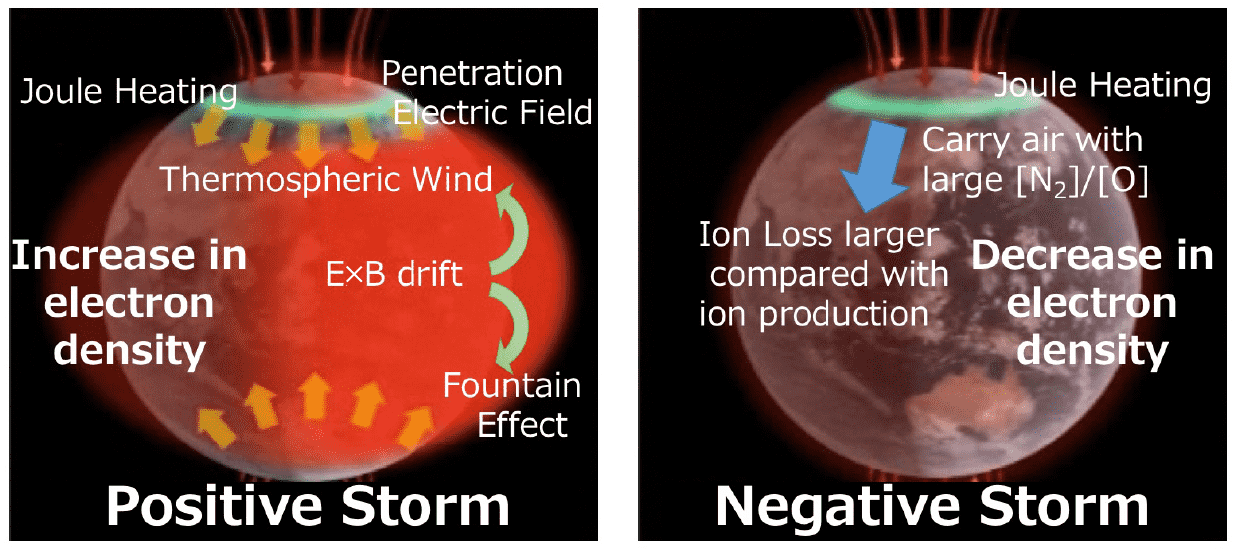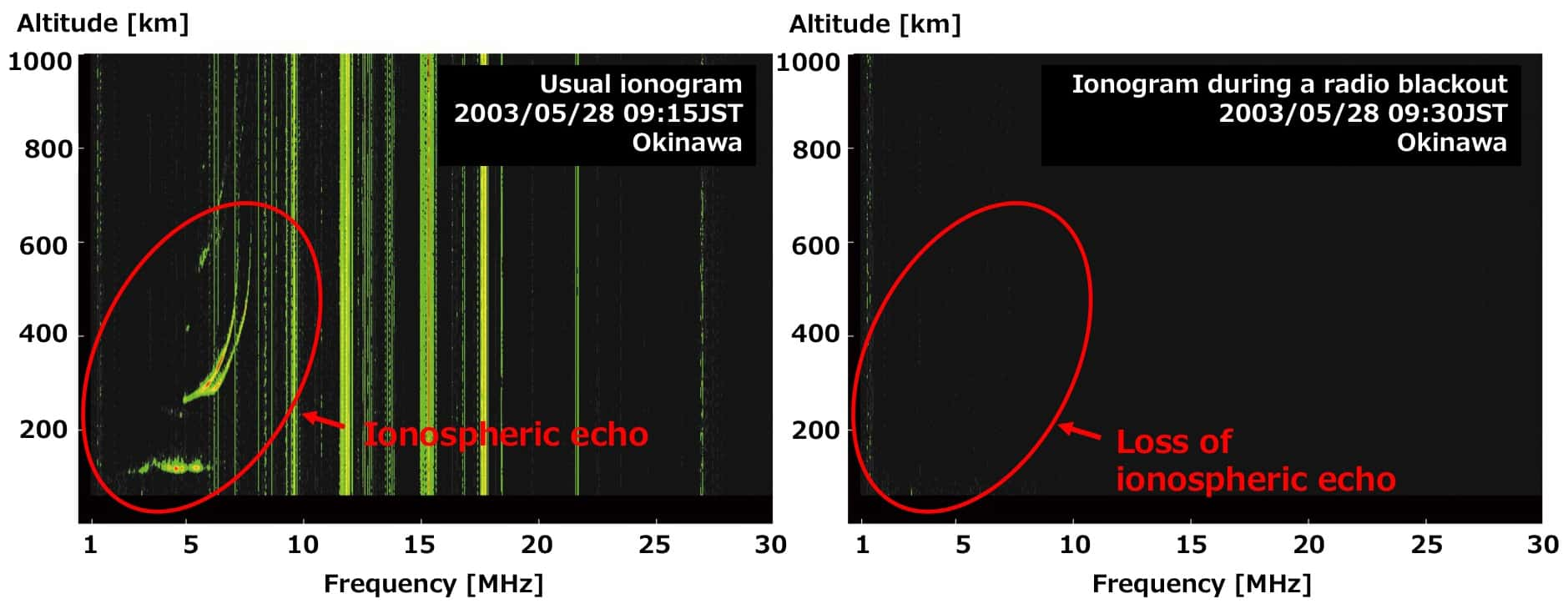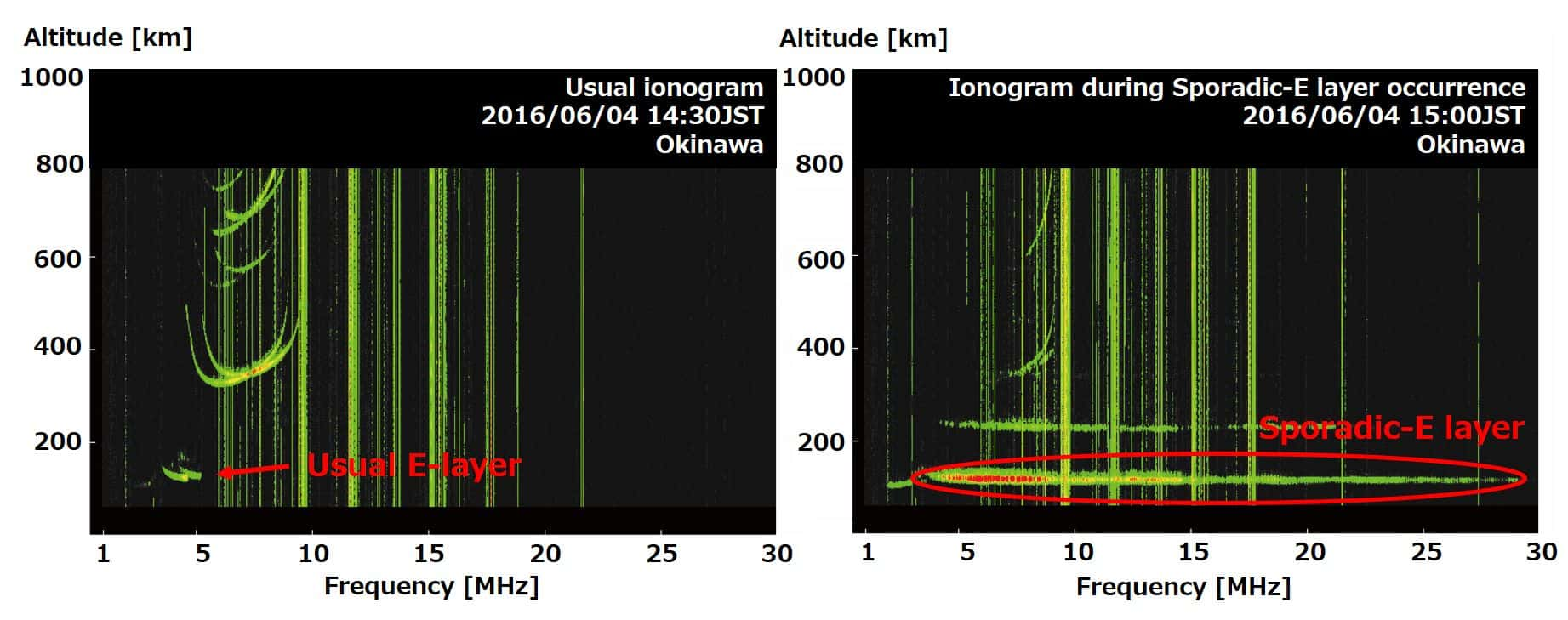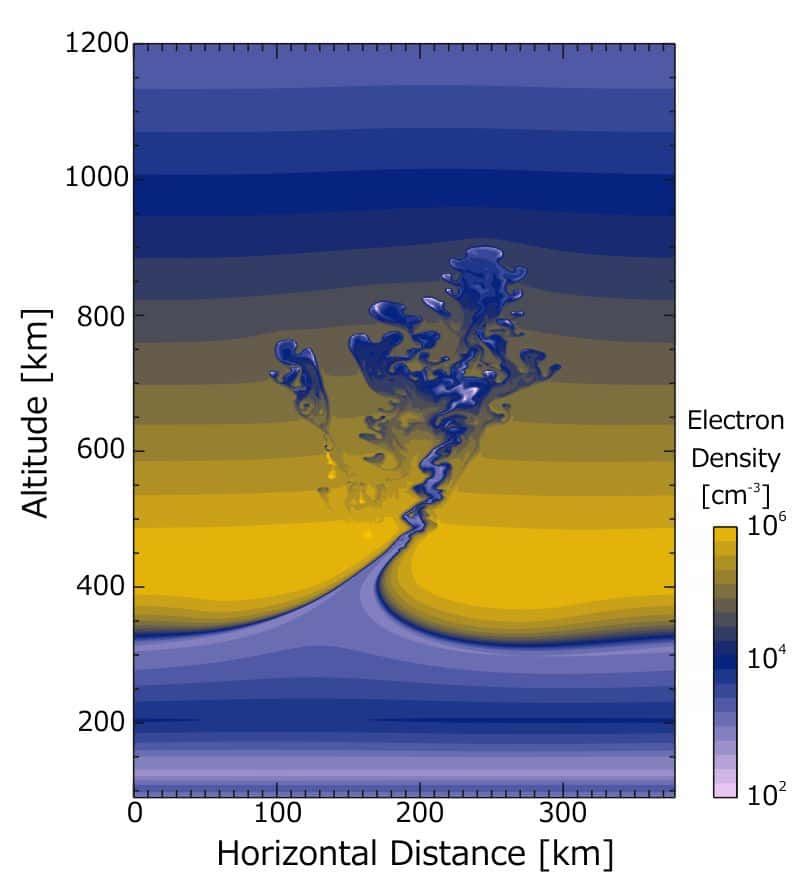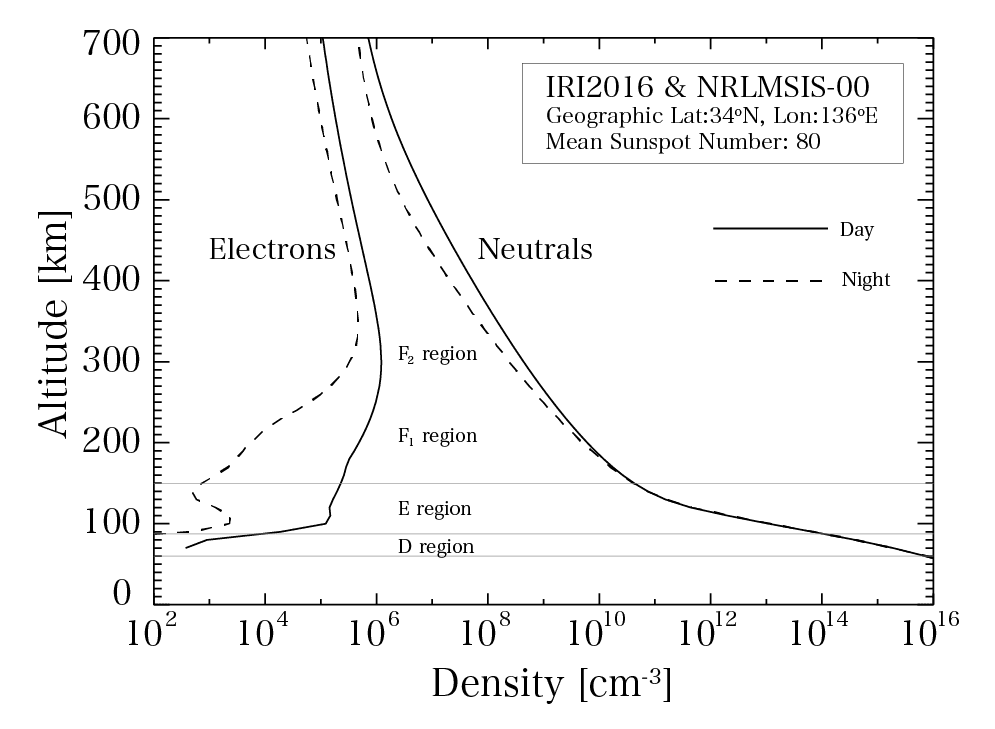
Earth's upper atmosphere is partially ionized due to the absorption of solar ultraviolet rays and X-rays and the impact of energized particles. The ionized atmosphere is called the ionosphere. As shown in the figure, the ionosphere expands over an altitude range from 60 to 1000 km, and is divided into areas such as the D, E, and F regions from its altitude distribution. (Figure 1).
These regions vary both temporarily and spatially in response to variations in solar UV intensity and in the state of the background neutral atmosphere. In the vicinity of Japan, the electron density generally becomes larger at lower latitudes. The electron density has regular temporal variations such as daily and seasonal cycles and the approximately 11-year cycle associated with solar activity. In addition to the periodic variations, irregular disturbances also occur. For example, immediately after a large solar flare, the "Dellinger phenomenon", an irregular increase in the D region electron density, sometimes occurs, which can disrupt radio communications. When the magnetosphere is disturbed, an "ionospheric storm" may occur, in which the F region electron density significantly increases or decreases. Some local fluctuations such as a "sporadic E layer" and "equatorial plasma bubble" also frequently occur in particular seasons.
